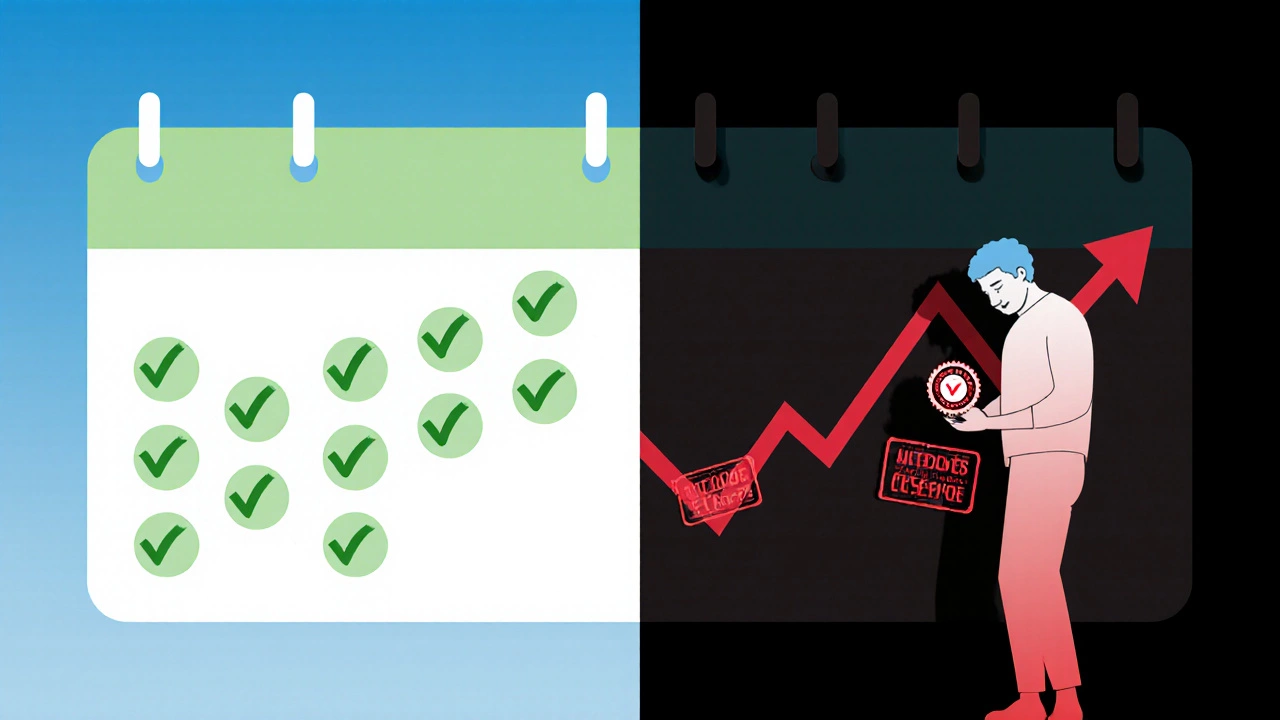Student Loan Credit Score Calculator
Understand Your Credit Score Impact
See how your student loan repayment behavior affects your credit score based on the five key factors that determine credit scores.
Enter your student loan details above to see how it affects your credit score.
When you take out a Student loan is a form of borrowed money designed to cover tuition, books, and living expenses for post‑secondary education, it becomes part of the financial picture that lenders and credit bureaus review. Understanding how this debt interacts with your Credit score is a three‑digit number that predicts how likely you are to repay a new line of credit can save you from surprise downgrades and higher interest rates down the road.
Understanding how student loans affect your credit score can help you avoid surprises and plan a healthier financial future.
How Credit Scores Are Calculated
Every major credit bureau (Equifax, Experian, TransUnion) follows a similar weighting system. The five pillars look like this:
- Payment history accounts for about 35% of the score - on‑time payments matter most.
- Amounts owed (often called credit utilization) makes up roughly 30% - how much debt you carry relative to your limits.
- Length of credit history contributes about 15% - older accounts boost the score.
- New credit (recent inquiries and opened accounts) is 10% - too many hard pulls can ding you.
- Credit mix is the remaining 10% - having a variety of credit types (revolving, installment, mortgage) can help.
Student loans fall squarely into the “installment” portion of the mix, and their repayment behavior feeds directly into the payment‑history and amounts‑owed components.
Where Student Loans Fit Into the Score
Because a student loan is an installment account, it shows up on your Credit report as a closed or open account with a balance, payment status, and original loan amount. The bureau records each monthly payment and flags any late filings, defaults, or collections. Here’s what happens in three common scenarios:
- On‑time payments: Each punctual payment adds a positive mark to the payment‑history column, nudging the score upward over time.
- Late payments (30‑+ days): Once a payment is 30 days overdue, the bureau records a late‑payment code. This usually drops the score by 30‑100 points depending on the existing score range.
- Default or charge‑off: When a loan falls into Default (the borrower fails to meet repayment obligations for 270 days on federal loans, or the lender declares the debt uncollectible on private loans, the account is closed with a negative status. This can shave off 100‑200 points instantly.
Timely Payments: The Credit‑Boosting Engine
Even though student loans can be sizable, their impact on the amounts‑owed factor is relatively modest. Credit utilization primarily looks at revolving credit (credit cards, lines of credit). However, a high outstanding student‑loan balance can still affect the “overall debt” perception that some scoring models use.
Keeping the loan balance under control while paying on time creates a win‑win:
- Consistent on‑time payments reinforce a clean payment‑history record.
- The loan’s age adds to the length‑of‑credit history, especially if you’ve held the account for several years.
- Paying down the principal reduces the total debt figure, which helps the amounts‑owed component in newer FICO versions.
For example, a borrower with a 720 FICO score who makes every monthly student‑loan payment on schedule can see a 5‑10 point increase after a year of flawless records.
Missed Payments and Default: The Credit‑Score Penalty Box
Late payments are the single biggest enemy of a healthy credit score. The first 30‑day miss usually drops the score by about 60 points for someone in the 660‑740 range. A second or third miss within 12 months compounds the damage.
When a loan moves into default, the hit is even harsher. Federal loans in default trigger a report to the bureaus, and private lenders may send the debt to collections. Both actions are recorded as “serious delinquency,” a red flag that can push a 700‑point score below 600.
Recovery from default is possible but takes time. Re‑establishing a positive payment history, settling the debt, and waiting for the negative mark to age off (usually seven years) are the typical steps.

Federal vs. Private Student Loans - Credit Differences
Most students start with Federal student loans are government‑backed loans that offer fixed rates, income‑driven repayment plans, and forgiveness options. Because they’re federally owned, the default process is slower, and borrowers often have more flexible repayment options, which can cushion credit damage if a hardship arises.
In contrast, Private student loans are issued by banks, credit unions, or online lenders and usually carry variable rates and stricter repayment terms. Missing a payment on a private loan can trigger collection actions more quickly, leading to faster credit‑score declines.
Choosing a private lender with a co‑signer can improve the initial credit‑score impact-because the co‑signer’s stronger credit assists approval-but it also means both parties share any negative outcomes.
Key Strategies to Protect Your Credit While Repaying Student Loans
- Set up automatic payments. Many lenders offer a small interest‑rate discount for autopay, and it guarantees you won’t miss the due date.
- Prioritize on‑time payments over aggressive payoff. A perfect payment history outweighs the benefit of a slightly lower balance.
- Use income‑driven repayment plans if you’re struggling. Federal plans adjust the monthly amount to stay affordable, preventing late marks.
- Monitor your credit report. Pull a free report from each bureau once a year; look for errors related to loan status.
- Consider refinancing only after establishing a solid payment record. Refinancing can lower interest, but the new loan adds a hard inquiry and resets the loan age.
Quick Checklist - Student Loans and Credit Score
- Make every payment on or before the due date.
- Keep an eye on the Debt‑to‑income ratio - lenders prefer it below 36%. A high ratio can affect future credit applications.
- Set up autopay to avoid accidental misses.
- Review your credit report annually for inaccuracies.
- If you fall behind, contact the servicer immediately to explore deferment or forbearance.
Comparison Table - Credit Score Factors and Student Loan Influence
| Credit‑Score Factor | Student‑Loan Impact | Tips to Maximize Benefit |
|---|---|---|
| Payment History (35%) | On‑time payments add positive marks; late payments cause large drops. | Auto‑pay, set reminders, prioritize this loan over optional debt. |
| Amounts Owed (30%) | Balance size matters less than revolving utilization, but high debt can affect newer models. | Pay down principal when possible, avoid borrowing beyond need. |
| Length of Credit History (15%) | Older student‑loan accounts add positively to the average age. | Keep the loan open even after payoff if you have no other installment accounts. |
| New Credit (10%) | Applying for a loan generates a hard inquiry, a minor short‑term dip. | Apply only once; use school’s financial aid office to streamline. |
| Credit Mix (10%) | Student loans add an installment type, improving mix diversity. | Maintain a healthy blend - a credit‑card plus a loan is ideal. |
What to Do If Your Score Takes a Hit
Seeing a sudden dip after a missed payment can be alarming, but the damage is often temporary. Follow these steps:
- Check the entry on your credit report. If it’s inaccurate, file a dispute with the bureau.
- Bring the loan current as quickly as possible. Once the status changes to “Current,” the score begins to recover.
- Use the next few months to build positive activity on other accounts (e.g., low‑utilization credit cards) to offset the dip.
- Consider a secured credit‑card or credit‑builder loan if you need fresh positive data points.
Patience is key - most scoring models weigh recent activity heavily, so a clean streak of 3‑6 months can bring most of the loss back.
Frequently Asked Questions
Do student loans appear on my credit report?
Yes. Both federal and private student loans are listed as installment accounts, showing the original amount, current balance, payment status, and payment history.
Will a student loan repayment plan affect my credit score?
Any repayment plan that results in on‑time payments improves your score. Income‑driven plans that reduce the monthly amount can help you stay current, preventing negative marks.
Can I refinance my student loan without hurting my credit?
Refinancing triggers a hard inquiry, which may drop the score by a few points temporarily. The long‑term effect is neutral or positive if the new loan has a lower interest rate and you keep payments on time.
How long does a student‑loan‑related negative stay on my credit report?
Late payments stay for seven years, while a default or charge‑off also remains for seven years from the reporting date.
Should I keep a paid‑off student loan open?
Yes, if the account is closed “Paid in full,” it still contributes to the length‑of‑credit history and credit‑mix, both of which are beneficial.
Student loans are a powerful tool for education, but they also act like any other credit account. Treat them with the same discipline you’d give a credit card, and your credit score will stay healthy throughout the repayment journey.

